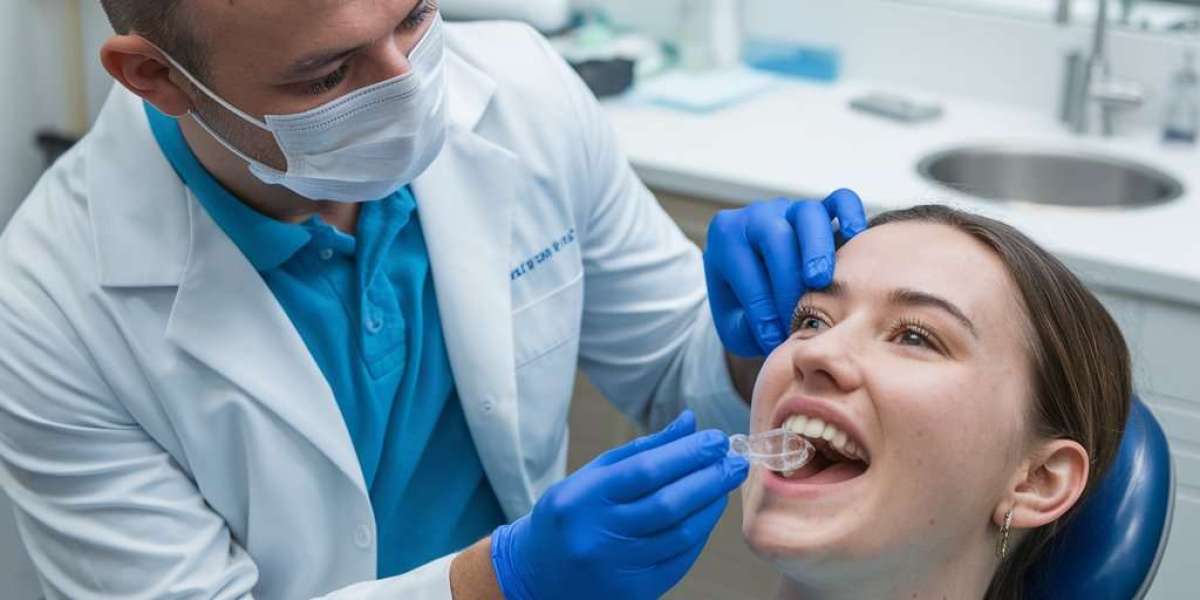Implant dentistry has come a long way since its inception. With advancements in technology, the quality of care and the precision of procedures have significantly improved. One of the key drivers of this transformation is the introduction of tools like Cone Beam Computed Tomography (CBCT) imaging and surgical guides, which are revolutionizing implant procedures. These cutting-edge technologies not only enhance the accuracy of treatments but also reduce patient recovery times and improve overall clinical outcomes.
CBCT Imaging: A Game-Changer in Implantology
Cone Beam Computed Tomography (CBCT) is one of the most significant technological advancements in modern implant dentistry. Traditional 2D X-rays only offered limited information, leaving room for error in planning and placement. CBCT, however, provides a 3D view of a patient’s oral and maxillofacial structures, allowing dental professionals to assess bone quality, quantity, and the exact location of important anatomical features like nerves and sinuses. This level of detail is essential for precise implant placement, significantly reducing the risk of complications.
With CBCT, dental practitioners can create a virtual model of the patient’s mouth and plan the implant procedure with far greater accuracy. This planning step is crucial for determining the ideal implant size, angle, and position, ensuring a high success rate. Additionally, the 3D imaging allows for better visualization of possible challenges, such as bone deficiencies or issues related to the surrounding structures, enabling the dentist to address these concerns before surgery.
Surgical Guides: Precision and Efficiency in Implant Placement
While CBCT imaging provides the necessary information for treatment planning, surgical guides are the tools that ensure accurate implementation of that plan. A surgical guide is a custom-made template that fits over a patient's existing teeth or gums, providing a clear roadmap for the dentist during the procedure. By using the data from CBCT scans, these guides are designed with precision, ensuring that the implants are placed exactly as planned, both in terms of positioning and depth.
The benefits of using surgical guides are immense. They not only enhance the precision of the surgery but also reduce the time required for the procedure. This is particularly important when dealing with complex cases or patients who may have limited bone structure. Surgical guides also minimize the chances of human error, making the procedure more predictable and less invasive. In turn, this reduces the risk of complications and speeds up recovery time for patients.
Combining CBCT Imaging and Surgical Guides: The Future of Implant Dentistry
The integration of CBCT imaging with surgical guides marks a turning point in implant dentistry. This combination allows for fully guided implant surgery, where the entire process—from planning to placement—is based on precise 3D data. The results are highly predictable, offering patients a faster, less painful, and more efficient treatment experience.
The ability to plan and execute implant procedures with such a high degree of accuracy has led to the rise of "same-day" implants, where patients can walk in for a consultation and leave with fully placed implants, all within a few hours. This is a significant step forward in providing more convenient and effective solutions for patients, reducing the need for multiple appointments and lengthy recovery periods.
How Technology Improves Patient Outcomes
Technology in implant dentistry isn't just about enhancing precision; it’s also about improving patient care. With tools like CBCT and surgical guides, patients benefit from a more comfortable experience, fewer complications, and faster recovery times. Additionally, these technologies allow dentists to offer more personalized care. By analyzing the 3D images and creating custom surgical guides, the treatment plan can be tailored to each patient’s unique needs.
Moreover, these technologies provide a clearer understanding of the treatment process, allowing patients to be more informed and confident in their treatment decisions. Enhanced visualization and communication with patients foster trust and help to reduce anxiety around the procedure.
The Importance of Continuing Education for Dentists
As implant technology continues to evolve, it’s vital for dental professionals to stay updated on the latest advancements. This is where continuing education (CE) programs come into play. A well-designed CE program ensures that dentists are equipped with the knowledge and skills needed to incorporate the newest technologies into their practices. Whether it’s learning to use advanced diagnostic tools like CBCT or mastering the art of surgical guide fabrication, continuing education is key to staying at the forefront of implant dentistry.
If you’re wondering how to choose the right CE program for dentists, it’s important to look for programs that offer hands-on experience with the latest technologies and are taught by experts in the field. Choose a program that is accredited and offers content that is relevant to your specific practice needs. Organizations like ADISeminars provide high-quality, specialized courses designed to keep dental professionals updated on the latest trends in implant dentistry and other areas of care.
Conclusion
The role of technology in modern implant dentistry cannot be overstated. CBCT imaging and surgical guides have transformed the way dental professionals approach implant placement, making procedures more accurate, efficient, and successful. As these technologies continue to evolve, they will only further improve the quality of care and patient outcomes. By embracing these advancements and continuing their education, dental professionals can ensure they are providing the highest level of care and staying competitive in an ever-changing field.
To stay ahead, it’s essential to continually refine your skills through educational opportunities like those offered by ADISeminars, helping you become proficient in the latest technologies and techniques for optimal patient care.






